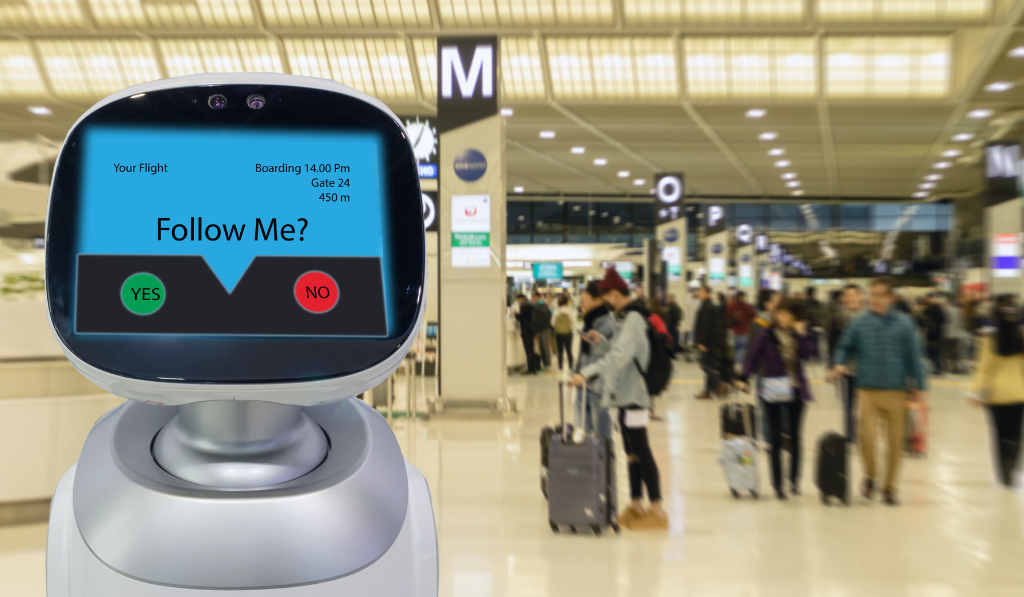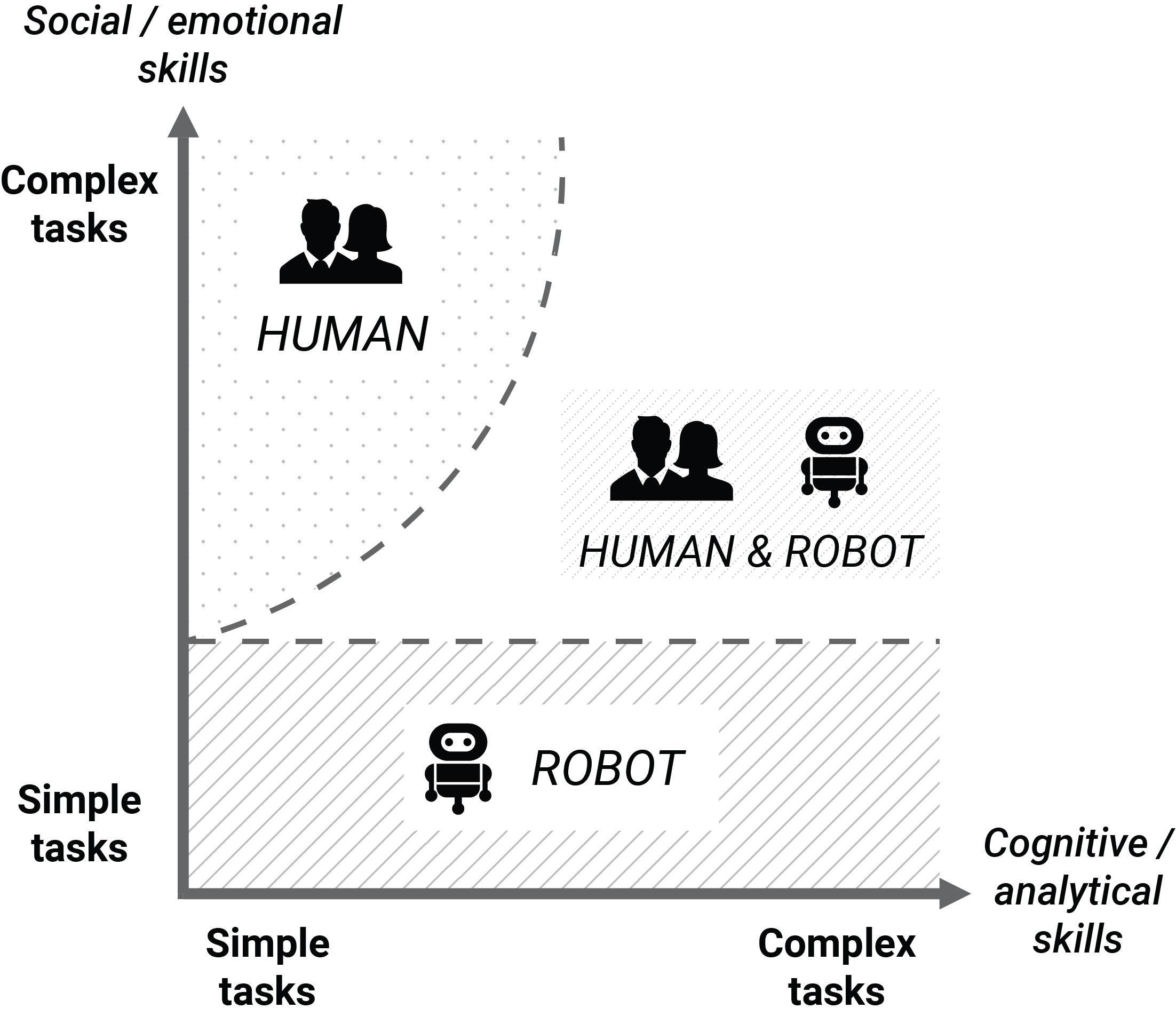What are the Implications of Service Robots in Hospitality for Consumers?

By Jochen Wirtz, Professor of Marketing, National University of Singapore; Werner H. Kunz, Professor of Marketing, University of Massachusetts; and Stefanie Paluch, Professor of Marketing, RWTH Aachen University
The Service Revolution has begun
The Industrial Revolution, started in the late 18th century, dramatically increased our standard of living by making high-quality, low-cost manufactured goods available to the masses. Today, our economies seem to be facing a turning point, but now in the service sector. Technologies rapidly become smarter and more powerful, and at the same time, they get smaller, lighter, and cheaper. These include hardware such as physical robots, drones, and wearable technologies, as well as code and software related to analytics, speech processing, image processing, virtual and augmented reality, cloud technologies, mobile technologies, geo-tagging, robotic process automation (RPA), low-code platforms, and machine learning. Together, these technologies will transform virtually all service sectors. Service robots and artificial intelligence (AI), combined with these technologies, will lead to rapid innovation that can dramatically improve the customer experience, service quality, and productivity all at the same time (Wirtz & Zeithaml, 2018).
Robot- and AI-delivered service offers unprecedented economies of scale and scope as the bulk of the costs are incurred in their development. Physical robots cost a fraction of adding headcount, and virtual robots (e.g., chatbots and virtual agents) can be scaled at close to zero incremental costs. Such dramatic salability does not only apply to virtual service robots such as chatbots but also to “visible” ones such as holograms. For example, an airport could install a hologram-based humanoid service robot every 50 meters to assist passengers and answer common questions (e.g., provide arrival information and directions to check-in counters) in all common languages. These holograms only require low-cost hardware (i.e., a camera, microphone, speaker, and projector), and do not take up floor space. (Travelers could push their baggage carts through a hologram when it gets crowded.)
Already, many firms show eager interest in experimenting with service robots. For example, in hotels lobbies, humanoid robots may be used to welcome guests, provide information, and entertain guests. At airports, they scan boarding passes and help passengers to find the right departure gate. Self-moving check-in kiosk robots detect busy areas and autonomously go there to help passengers reduce waiting time (Bruhn et al., 2020).
Such robots are the beginning of the Service Revolution. Similar to the shift that started in the Industrial Revolution from craftsmen to mass production, we believe an accelerated shift in the service sector towards robot- and AI-delivered services is imminent. The exciting prospect is that many services, including hospitality, healthcare, and education, are likely to become available at much lower prices and better quality. Consumers will be the big beneficiaries.
How will customer interactions with service robots differ from those with traditional self-service technologies?
Service robots have been defined as “system-based autonomous and adaptable interfaces that interact, communicate and deliver service to an organization’s customers” (Wirtz et al., 2018). These abilities differentiate service robots from traditional self-service technologies (SSTs) we are familiar with in the context of ticketing machines, websites, and apps. As shown in Table 1, service robots can deal with unstructured interactions and guide customers through their service journey. For example, a ticketing robot will not let customers get stuck as it can ask clarifying questions (e.g., “Is your return trip today? Can you travel off-peak?”) and can even recover customer errors (e.g., a wrong button pressed or incorrect information entered). For most standard services, customers will interact with service robots much like with service employees do (e.g., “I need a same-day return ticket” and “Can I use Apple Pay?”).
Table 1. Contrasting Service Robots with Traditional Self-Service Technologies
| Service Aspect | Self-Service Technologies (SSTs) | Service Robots |
| Customer Service Scripts and Roles |
|
|
|
|
|
|
|
|
| Customer Error Tolerance |
|
|
|
|
|
| Service Recovery Capability |
|
|
How will customer interactions With Service Robots Differ from Those With Human Service Staff?
Robots are not able to feel and express real emotions. This is important in certain services whereby the academic literature distinguishes between deep acting (i.e., employees displaying real emotions) and surface acting (i.e., they show superficial and not deeply felt emotional responses) (Wirtz & Jerger, 2016). In contrast, a robot’s emotions are just displayed and not authentic. Consumers generally know this and respond accordingly. On the other hand, robots can surface act and consistently be pleasant; they are not prone to emotional burnout. This may make robots perform better than humans in jobs that require the display of surface-acted emotions. Other significant differences are summarized in Table 2.
Table 2. Contrasting Frontline Employees with Service Robots
| Dimension | Service Employees | Service Robots |
| Training and Learning |
|
|
| Customer Experience |
|
|
|
|
|
|
|
|
| Firm Strategy |
|
|
|
|
For what types of services will customers prefer service robots?
Initial deployments of service robots focused on simple and repetitive tasks that tended to be low in cognitive and emotional complexity (Figure 1). For example, physical robots in hotels deliver room service and bring baggage to guestrooms. Text and voice-based conversational agents increasingly handle routine customer interactions. Even when interacting with a human service employee, that employee may well be supported by an AI, and calls are prescreened, preprocessed, and then escalated to the human agent because of its complexity. The outcome is that customer contact staff do not have to deal with high volumes of trivial customer requests but instead can spend their time on higher-value and higher-level tasks. For example, a chatbot for the NUS MBA Program handled 20,000 unique conversations per month right after launch and answered all the routine questions the admission team had to deal with previously (e.g., “Do I need a GMAT,” “What scholarships are available,” and “when is the application deadline?”). The admission team can now focus on top-quality candidates and the more tricky, complex discussions.
Figure 1. The Service Robot Deployment Model

In addition to routine tasks, services that require high cognitive and analytical skills will be delivered effectively by service robots (e.g., financial services). For example, service robots can analyze large volumes of data, integrate internal and external information, recognize patterns, and relate these to customer profiles. Within minutes, these robots can propose best-fitting solutions and make recommendations.
It is difficult for robots to deal with emotions that go beyond a pleasant display of surface demeanor. Especially complex and emotionally demanding tasks are still better handled by service employees as they can bring genuine emotions such as excitement and joy or empathy and compassion to the service encounter. For example, in complaint and service recovery situations, humans can respond better to the individual context and show understanding.
Human-robot teams will increasingly deliver tasks that require high cognitive and high emotional skills. For example, in a travel context, service robots will do the analytical work (e.g., analyze flight, hotel, and tour availability, schedules, and prices, then present and compare possible options), and humans will make the final recommendations and decisions and take over social and emotional tasks (e.g., advising and persuading their customers).
Implications for Hospitality Firms
The Service Revolution will have enormous implications for business. Some of the most pressing issues for service firms to tackle include the following:
Implication #1 – Don’t Reinvent the Wheel and Use Available Technology. Most hospitality providers are not excellent at technological innovation. As such, much of the technology required for AI (e.g., chatbot solutions, digital agents, smart SST, and service robots) will not be produced in-house by hospitality providers but will be procured by large, globally operating vendors that specialize in digital agents, or hotel solutions for baggage handling and room service, or airport solutions for information counters, and so on. This is akin to banks not building ATMs by procuring them from specialist equipment providers.
Implication #2 – Restructure the Service Frontline. When implementing service robots, firms will inevitably transform and dramatically reorganize. This requires strong leadership and support, and employees’ willingness and ability to change. Employees will be assigned new tasks and responsibilities and will need to develop the required skills (incl., RPA, basic programming, and technology troubleshooting).
Implication #3 – See Service Robots as a Necessary Investment. The deployment of service robots comes with investments including acquisition, integration, development and maintenance costs, development of necessary IT and AI specialists and programmers, and building virtual networks and maintenance of systems. It may take time for these investments to be recouped; however, payback of projects is often less than 12 months for successful implementations (Bornet et al., 2020).
Implication #4 – AI as Opportunity for Cost-Effective Service Excellence. We predict that hybrid human-robot teams and collaboration will be the service model of the future for many more complex service contexts. These hybrid teams will be able to realize productivity and service quality gains for the company by combining the advantages of AI and human employees. Robots’ enormous knowledge of data is an undeniable advantage for creating customized services. Organizations should focus on implementing, managing, and fine-tuning the deployment of robot-employee-customer co-creation teams to deliver an unprecedented quality of interaction for their customers (Wirtz, 2020).
Implication #5 – Mitigate Potential Risks of Robot Deployment. Organizations need to mitigate potential anxieties related to customer-facing service robots such as algorithm aversion, perceived loss of the human touch, and consumer privacy. That requires organizations to embrace corporate digital responsibility (CDR) and develop a set of shared values, norms, and actionable guidelines on the responsible use of technology and associated data. For example, related to data, it includes their capturing (e.g., using biometrics or social media accounts), their use (e.g., to build variables such as a healthiness index or financial score), decision-making (e.g., approve loans and set interest rates), and their retirement (e.g., when is information on a bounced payment deleted from the firm’s database) (Lobschat et al., 2021).
In summary, service robots and AI will transform the service sector and bring unprecedented improvements to the customer experience, service quality, and productivity (Wirtz & Zeithaml, 2018). As such, this Service Revolution has the potential to dramatically increase our standard of living as the Industrial Revolution did for manufactured goods. This time, however, services such as financial, logistics, health care, and education are being industrialized.
References
9 comments
Currently, most of the fields have many robots, human power cannot manage and control all the work, one industry will need a fixed number of robots to complete the job. lolbeans
Robots are very useful for our modern life. Therefore, it makes sense to use robots in the consumer industry. Idle mining empire
Bayraklı Psikolog, en iyi tavsiyeler araması yapanlar için Google Psikolog Sinan Aslan ve Nihal Gumulcine. 2022, 2023, 2024.
Seans Ücreti fiyatları belirler.
https://www.perapsikolojiizmir.com/
Combining Human efforts and AI would really go a long way in improving Work productivity. I advise most teams and HR professionals about that. Very Useful content right here!
Insurance Guides
thanks for such good article, you can buy wotlk gold if you like playing Wotlk classic
This Article very good information. thanks for helpfull writing. Greffe de Cheveux Istanbul
Tank you man. its satisfaction article. Haartransplantatie
thanks for helpfull writing this subject very important and good. have a good day… Tüp Mide Fiyatı
Comments are closed.